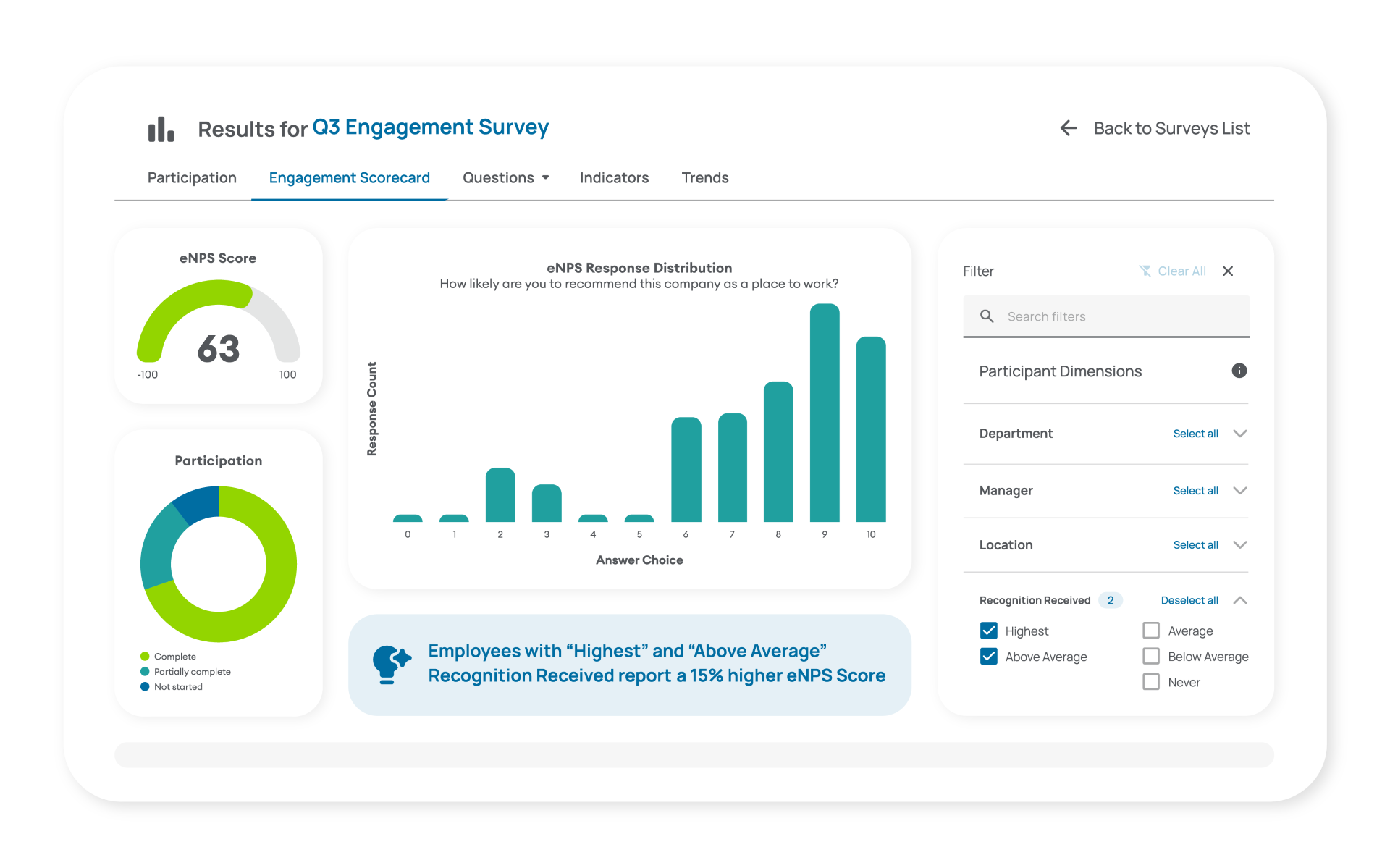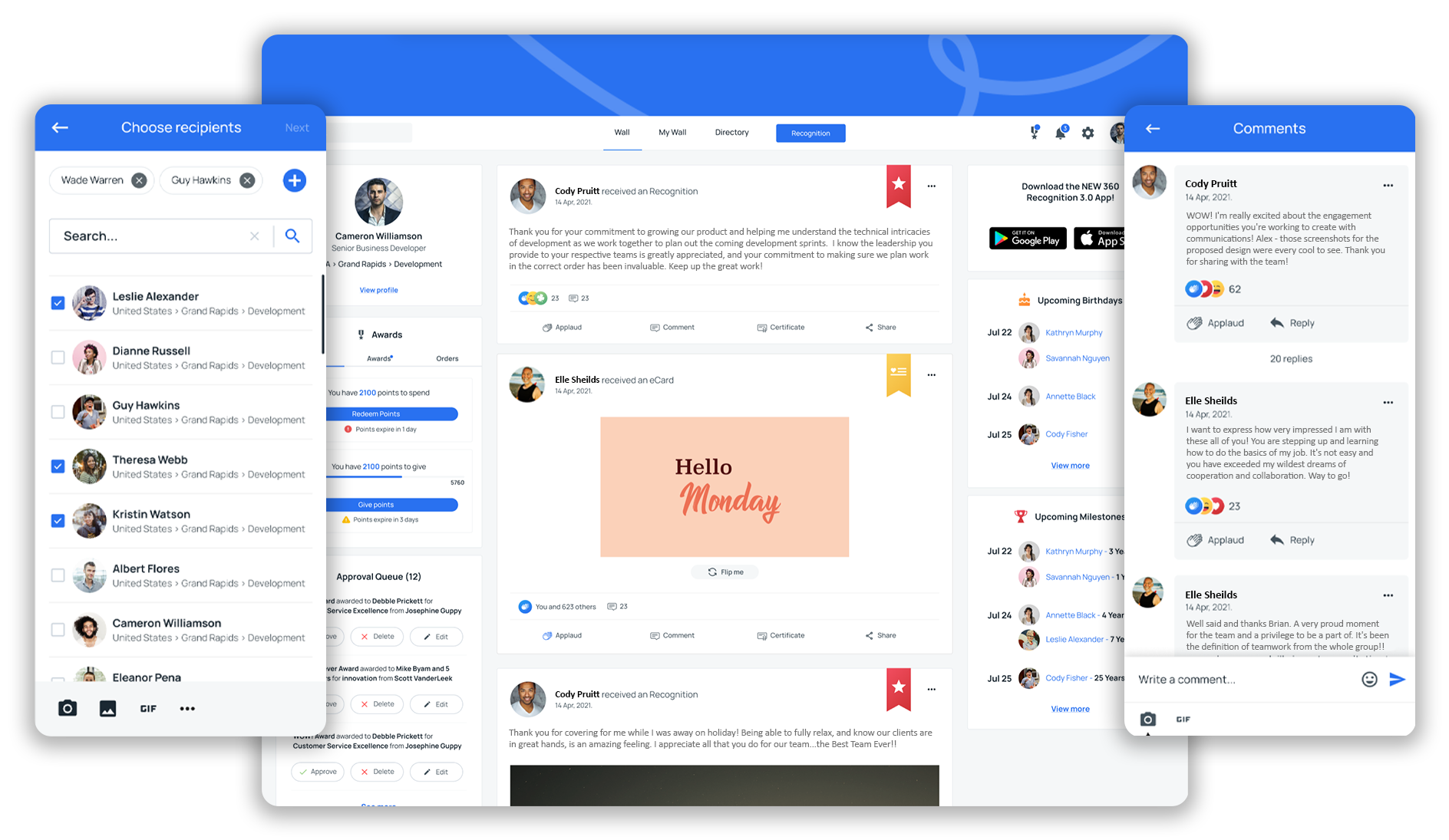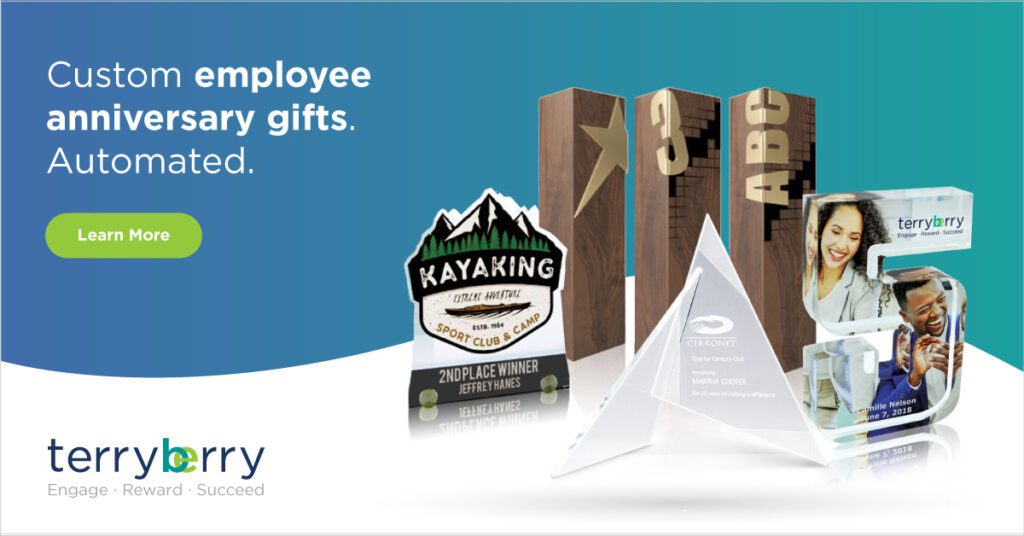April 14, 2025


If you’ve noticed an engagement issue within your company, you’re not alone. Employees across America are increasingly detached from their jobs. So much so, Gallup has coined this trend as The Great Detachment.
Of course, detachment and disengagement are only symptoms of bigger cultural problems. And one of those major problems is that many employees feel a lack of purpose in their work. In fact, employees who feel a sense of purpose are significantly more engaged at work, with research indicating they are 3 times more likely to be engaged than those who don’t, and they also report higher fulfillment and engagement scores. This highlights the critical need to align personal and company purpose to improve workplace morale.
Here we’ll discuss the important role purpose plays in the workplace and how leaders can inject purpose into each employee’s responsibilities, regardless of their job title, by clearly communicating the company's purpose.
What is Employee Purpose?
Employee purpose refers to the sense of meaning and fulfillment that an individual derives from their work. It’s the connection between what an employee does daily and how it contributes to a larger mission, personal values, or the organization's purpose.
While it’s true that not every company will have a deep and meaningful overall mission, it doesn’t mean that people’s jobs aren’t important. It’s critical for companies to narrow the gap between employees’ jobs, corporate goals, and personal values. Harvard Business Review calls this narrowing “purpose congruence.”
Why is Employee Purpose Important for Organizational Success?
Employee purpose directly impacts engagement, motivation, productivity, and overall job satisfaction. Creating a purpose-driven workplace drives organizational success by aligning employee motivations and values with the organization's purpose.
When employees feel that their work has meaning and contributes to something bigger than themselves, they are more likely to be committed, innovative, and loyal to their organization, ultimately leading to improved organizational success. So much so, research has found:
- McKinsey & Company research shows 82% of employees feel an organization’s purpose is important, and 70% say their work defines their sense of purpose.
- Employees who feel a sense of purpose are more likely to be engaged and motivated in their work.
- A study from the University of Oxford found that happy employees, who often feel a sense of purpose, are 12% more productive than unhappy ones.
- Employees who feel a sense of purpose are more likely to stay with an organization.
- A study from Glassdoor found that approximately 87% of employees expect their employers to support a healthy work-life balance.
- A 2017 engagement report found that only 29% of employees say they are satisfied with their career advancement with 41% stating that it is vital to job satisfaction.
- According to data compiled by Forbes, 93% of workers agree that showing empathy in the workplace is an essential means of upping retention and engagement.
The Purpose Gap in a Purpose-Driven Culture
Understanding the importance of purpose is one thing. Being able to provide it has proven to be a different story for many organizations.
According to McKinsey research, 85% of execs and upper management said that they’re living their purpose at work. However, only 15% of frontline managers and frontline employees agreed. Worse, nearly half of these employees disagreed, compared with just a smattering of executives and upper management.


Furthermore, 62% of respondents said that while they get some purpose from work, they want to get even more. These less satisfied employees experienced lower overall work and life outcomes compared to their more satisfied peers. They reported decreased energy levels, reduced life satisfaction, and diminished engagement, satisfaction, and enthusiasm for their work. Ultimately, these negative employee experiences lead to unfavorable business outcomes.
Connecting Personal Purpose to Work
Connecting personal purpose to work is essential for employee well-being and job satisfaction. When employees can align their personal values and passions with their work, they're more likely to feel motivated, engaged, and fulfilled. Encouraging employees to reflect on their personal purpose and how it relates to their work can help them find meaning and significance in their roles.
Whether it's major companies or small businesses, when employees understand how their roles contribute to a greater organizational purpose, it can lead to increased job satisfaction, productivity, and retention rates. Organizations can support this process by providing opportunities for personal and professional growth, recognizing and celebrating purpose-driven contributions, and fostering a positive and supportive workplace culture.
5 Ways to Improve Employee Purpose
While providing employees with a sense of purpose can be a daunting task - after all, what drives each person is a deeply personal topic - it is still worth organizations prioritizing. Understanding how individual purpose is deeply connected to both personal and professional aspects of a person's life can significantly impact their overall well-being.
When employees at any level feel that their work fulfills their sense of purpose, they report work and life outcomes that are two to five times higher than those of their unfulfilled peers. Recognizing employees as individuals with personal lives is essential for fostering a sense of purpose in the workplace. This highlights the importance of organizations fostering a workplace where employees find purpose in their roles, regardless of whether they initially seek it from work. Ultimately, both employees and the organization benefit from a purpose-driven environment.
The decisions made by company leaders and managers are the key to helping employees find purpose in their work. By making intentional, thoughtful choices, you can enhance both your colleagues’ well-being and the company’s overall performance. Here are five strategies to guide your efforts:
1. Align Work to Company Mission
One of the most effective ways to cultivate purpose is by ensuring that team members understand how their work aligns with a meaningful mission. Leaders should clearly communicate the company’s purpose and values while showing employees how their individual roles contribute to the bigger picture.
Sharing real-world stories of how the company’s work makes a difference—whether through customer impact, innovation, or community contributions—can help employees feel a stronger sense of connection to their work.
For example, a cashier or stocker at a grocery store might think they’re just scanning barcodes or arranging shelves, but in reality, they're ensuring that families have access to fresh food, making sure a parent can provide a healthy meal for their child, or helping an elderly customer find what they need. Instead of just "ringing up purchases," leaders can highlight that they're helping nourishing the community.
2. Provide Personal and Professional Growth and Development Opportunities
Providing opportunities for growth and development also plays a crucial role. Employees are more likely to find purpose when they have a clear path for career advancement and skill development.
Organizations can support this by offering mentorship programs, training opportunities, and stretch assignments that challenge employees and keep their work engaging. When employees can see their personal and professional growth within a company, they are more likely to feel fulfilled.
WorkStep surveyed over 18,000 hourly workers across 150 companies and found that lack of career growth was the top reason for turnover. In truth, this finding should be unsurprising.
People want to feel as though they’re growing, developing, and advancing. Furthermore, the ability to develop skills is a fundamental component of employee engagement. Companies with a culture of growth tend to attract and retain high-performing employees who develop stronger relationships with the company.
This is especially true for younger employees. According to a LinkedIn study, 40% of young workers said they were willing to accept a 5% pay cut to work in a position that offered career growth opportunities. Additionally, 76% of Gen Zers want more opportunities to move up or increase responsibilities at work.
Employee development opportunities may include:
- Career development conferences
- Online classes or higher education
- Taking on more responsibilities and challenges
These activities can:
- Enhance an employee's performance in his or her current role
- Spark curiosity or bring out a new talent
- Present the opportunity to learn about other roles within the company's industry
3. Recognize and Reward
Recognizing and appreciating employees’ contributions reinforces their sense of purpose. Beyond acknowledging achievements, companies should highlight the impact of employees’ work, whether on customers, colleagues, or the community.
Recognition is another powerful motivator that can retain quality employees. Companies that recognize the hard work of their team members tend to have lower turnover rates and higher engagement levels than companies that don't offer recognition programs.
In fact, a study by the American Psychological Association found that 93% of employees “who reported feeling valued said that they are motivated to do their best at work.” Another study found that when employees believe their efforts will be recognized, they’re 2.7x more likely to be highly engaged in their work.
Consider starting a formal employee recognition program to ensure recognition becomes engrained in your company's culture. Terryberry provides recognition solutions to help drive performance and retention through effective employee engagement. These solutions include:
- Social Recognition: Empower your employees and managers to recognize their peers and celebrate successes with an easy-to-use social recognition application.
- Service Awards and Performance Awards: Recognize and reward employees based on years of service awards, anniversaries, or performance.
- Wellness Programs: Terryberry makes it easy to run wellness programs and activity challenges that increase engagement, expand corporate health, and build team camaraderie.
- Pulse Survey Software: Because employee purpose is one of Terryberry's engagement pillars, we've built our employee engagement survey with scientifically validated methods for measuring purpose.
If you're thinking about implementing a strategy to recognize employees, schedule a demo with our team to see how Terryberry can transform employee engagement at your company.
4. Empower Employees with Autonomy
Autonomy and trust also contribute significantly to an employee’s sense of purpose. When employees have ownership of their work and are empowered to make decisions, they feel a greater sense of responsibility and fulfillment. In fact, a 2021 study by Harvard Business Review found that employees who have autonomy over their work schedule and methods are nearly 5 times more likely to be engaged at work.
Encouraging creativity and problem-solving allows employees to take initiative and see the direct impact of their contributions. Another study found that found that autonomous employees are 43% more likely to be highly innovative, as autonomy fosters creativity and problem-solving. Creating a culture of psychological safety, where employees feel comfortable sharing ideas without fear of criticism, further strengthens their connection to the organization.
5. Listen and Adapt to Boost Employee Engagement
Finally, companies must listen to their employees and adapt to their needs. Regular check-ins and surveys help organizations understand what drives employees and what might be hindering their sense of purpose. Acting on feedback to improve workplace culture, job satisfaction, and career development opportunities ensures that employees feel heard and valued.
Providing spaces for open conversations about career aspirations and workplace fulfillment can also help employees align their personal goals with the company’s mission.
This can be done through regular, one-on-one meetings where employee and manager discuss the goals of the employee and ways to achieve those goals. Doing so shows the employee that they have a future at the company and will help build trust, loyalty, and engagement.
Also consider running periodic employee engagement surveys. An employee engagement survey is a tool used to measure how employees feel about their work, their job satisfaction, and their commitment to the organization.
These surveys usually include questions about:
- Job satisfaction
- Engagement with work
- Commitment to the organization
- Motivation at work
- Satisfaction with management


Employee engagement surveys can be administered in many ways, but most are either paper-based or online. They can be given to employees all at once (such as during a company-wide meeting), or they can be sent out periodically (such as once a year).
Once employers have feedback from their employees, it’s important to communicate back to your team what information you gathered from the survey and how the company will use this information. Whether you decide to address concerns directly with employees or make changes to company policy, it's crucial that you show your team that their voices are being heard.
The Purpose Sacrifice
It's also important for leaders to be mindful of the double-edged sword a purpose-driven workforce can be. While employees who have a sense of purpose tend to be more engaged, happier, and more satisfied, the flip side is that they may also be more likely to burn out.
One study, for example, found that zookeepers with a strong sense of calling, meaning, and significance in their work were more likely to sacrifice pay, personal time, and comfort for their work. They were also more likely to hold their employer to a higher standard.
This isn't to say that purpose isn't worth creating for employees, more so that business leaders should pay extra attention to signs of burnout for employees who feel a strong sense of purpose in their work.
Purpose-Driven Culture
Overall, purpose-driven employees create a win-win situation where employees experience greater job satisfaction and fulfillment, while organizations benefit from increased productivity, reduced turnover, improved customer satisfaction, and a positive workplace culture.
Terryberry provides solutions to help drive performance and retention through effective employee engagement. Ready to learn more? Sign up for our webinar: Terryberry Product Spotlight - Purpose and Values.



